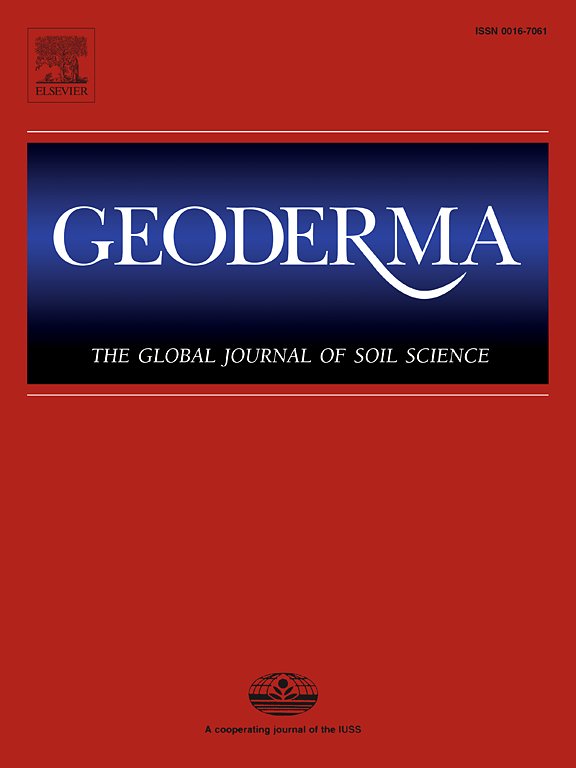Enhancing soil organic carbon prediction by unraveling the role of crop residue coverage using interpretable machine learning
IF 5.6
1区 农林科学
Q1 SOIL SCIENCE
引用次数: 0
Abstract
Accurate regional mapping of soil organic carbon (SOC) in croplands is essential for assessing soil carbon sequestration potential. However, accurate SOC mapping of cropland at a regional scale is challenging due to numerous natural and anthropogenic management factors. The impact of covered crop residue remains undervalued when mapping surface SOC, despite the significant impact of crop residue coverage (CRC) on SOC. In particular, the agricultural management practice of returning crop residues to the soil significantly alters the spatio temporal patterns of SOC in northeast China. Given these issues, we used the Shapley Additive exPlanations (SHAP) approach to interpret the influence of natural and anthropogenic factors on SOC estimation using the random forest model. Our results show the high SHAP values of air temperature, CRC, and clay content due to their significant influence on SOC estimation. Interestingly, our analysis showed a significant increase in SHAP values when the CRC reached 0.30, which refers to the CRC threshold of conservation tillage. Furthermore, our results revealed that integrating crop residue coverage significantly improved the accuracy of SOC mapping as the Lin Concordance Correlation Coefficient (LCCC) increased from 0.75 to 0.83 and the root mean squared error (RMSE) decreased from 6.70 g kg−1 to 5.60 g kg−1. This study provides actionable insights for optimizing CRC management practices for SOC sequestration in Northeast China.

通过使用可解释的机器学习揭示作物残茬覆盖的作用,增强土壤有机碳预测
准确的农田土壤有机碳(SOC)区域制图是评估土壤固碳潜力的基础。然而,由于许多自然和人为管理因素,在区域尺度上精确的农田有机碳制图具有挑战性。尽管作物残茬覆盖对土壤有机碳有显著影响,但在土壤有机碳制图中,被覆盖作物残茬的影响仍被低估。其中,秸秆还田显著改变了东北地区土壤有机碳的时空格局。考虑到这些问题,我们使用Shapley加性解释(SHAP)方法来解释自然因子和人为因子对随机森林模型SOC估算的影响。我们的研究结果表明,由于空气温度、CRC和粘土含量对有机碳估算的显著影响,它们的SHAP值很高。有趣的是,我们的分析显示,当CRC达到0.30(保护性耕作的CRC阈值)时,SHAP值显著增加。此外,我们的研究结果表明,整合作物残茬覆盖度显著提高了土壤有机碳制图的准确性,林氏一致性相关系数(LCCC)从0.75增加到0.83,均方根误差(RMSE)从6.70 g kg - 1降低到5.60 g kg - 1。本研究为优化东北地区轨道交通固碳管理实践提供了可操作的见解。
本文章由计算机程序翻译,如有差异,请以英文原文为准。
求助全文
约1分钟内获得全文
求助全文
来源期刊

Geoderma
农林科学-土壤科学
CiteScore
11.80
自引率
6.60%
发文量
597
审稿时长
58 days
期刊介绍:
Geoderma - the global journal of soil science - welcomes authors, readers and soil research from all parts of the world, encourages worldwide soil studies, and embraces all aspects of soil science and its associated pedagogy. The journal particularly welcomes interdisciplinary work focusing on dynamic soil processes and functions across space and time.
 求助内容:
求助内容: 应助结果提醒方式:
应助结果提醒方式:


